All the solutions provided in McGraw Hill Math Grade 3 Answer Key PDF Chapter 4 Lesson 3 Multiply with Arrays will give you a clear idea of the concepts.
McGraw-Hill My Math Grade 3 Answer Key Chapter 4 Lesson 3 Multiply with Arrays
Draw It
An array has rows of equal length and columns of equal length.

- Make an array on a piece of paper. Arrange the tiles in 4 rows with 3 tiles in each row. Draw the array.
- Count. What is the total number of tiles? ____
- Turn your paper. There are now ____ rows with ___ tiles in each row.
Draw what the array looks like now. - Count. What is the total number of tiles? _____
So, there are the same number of tiles, ____, if you turn the array.
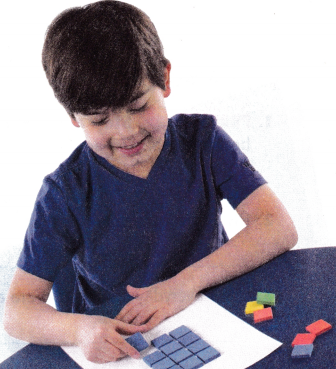
The Commutative Property of Multiplication states that the order in which numbers are multiplied does not change the product.
Answer:

Explanation:
One way:
I drew an array that has 4 rows and 3 columns
The addition sentence that shows the equal rows is
3 + 3 + 3 + 3 = 12
The multiplication sentence that represents the array is 4 x 3 = 12
Another way:
I turned the array and it has 2 rows and 5 columns
The addition sentence that shows the equal rows is
4 + 4 + 4 = 12
The multiplication sentence that represents the array is 3 x 4 = 12.
Try It
1. Use tiles to make an array on paper that has 5 rows of 2 tiles. Draw the array.
Write an addition sentence to show equal rows.
___ + ___ + ___ + ____ + ___ = ____
Write a multiplication sentence to represent the array.

2. Turn the array the other way. There are now rows of ____ tiles. Draw the array.
Write an addition sentence to show equal rows.
___ + ___ = ___.
Write a multiplication sentence to represent the array.
____ + ____ = ____
3. Write a multiplication sentence to represent the array.

Answer:
![]()



Explanation:
One way:
I drew an array that has 5 rows and 2 columns
The addition sentence that shows the equal rows is
2 + 2 + 2 + 2 + 2 = 10
The multiplication sentence that represents the array is 5 x 2 = 10
Another way:
I turned the array and it has 2 rows and 5 columns
The addition sentence that shows the equal rows is
5 + 5 = 10
The multiplication sentence that represents the array is 2 x 5 = 10.
Talk About It
Question 1.
Mathematical PRACTICE 2 Stop and Reflect What is the connection between repeated addition and an array?
Answer:
An array is a collection of numbers arranged in a specific manner. This arrangement is either in rows or columns. A Repeated Addition Array is used tofind the total number of similar elements in an array through addition.
Question 2.
How can you use an array to model the Commutative Property?
Answer:
The commutative property of multiplication can be neatly illustrated using an array. An array could be read as rows of, or as columns of. Or the array could be physically turned around to show that rows of has the same number as rows of.
Question 3.
List 3 everyday objects that are arranged in an array.
Answer:
Books, glasses and boxes in house are usually arranged in an array.
Practice It
Draw an array to find the product.
Question 4.
4 × 2 = ____
Answer:

Explanation:
I drew an array to find the product of 4 x 2
2 + 2 + 2 + 2 = 8
4 x 2 = 8
Therefore, the product is 8.
Question 5.
3 × 5 = ____
Answer:

Explanation:
I drew an array to find the product of 3 x 5
5 + 5 + 5
3 x 5 = 15
Therefore, the product is 15.
Write an addition sentence and a multiplication sentence to show equal rows.
Question 6.

___ + ____ + ____ + ____ = _____
____ × ____ = _____
Answer:
5 + 5 + 5 + 5= 20
4 x 5 = 20
Explanation:
The addition sentence that shows equal rows is 5 + 5 + 5 + 5 = 20
The multiplication sentence that shows equal rows is 4 x 5 = 20.
Question 7.

___ + ____ + ____ + ____ = _____
____ × ____ = _____
Answer:
3 + 3 + 3 = 9
3 x 3 = 9
Explanation:
The addition sentence that shows equal rows is 3 + 3 + 3 = 9
The multiplication sentence that shows equal rows is 3 x 3 = 9.
Question 8.

___ + ____ = _____
____ × ____ = _____
Answer:
3 + 3 = 6
2 x 3 = 6
Explanation:
The addition sentence that shows equal rows is 3 + 3 = 6
The multiplication sentence that shows equal rows is 2 x 3 = 6.
Question 9.
Use the Commutative Property of Multiplication to write another multiplication sentence for Exercise 8.
____ × ____ = _____
Answer:
2 x 3 = 6
Explanation:
2 x 3 has 2 rows and 3 columns
Change rows to columns to find another sentence
3 rows and 2 columns
Another multiplication sentence for 2 x 3 = 6 is 3 x 2 = 6.
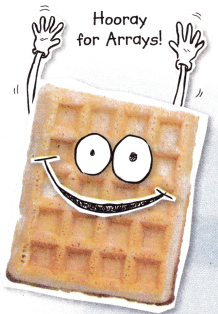
Question 10.
Describe a real-world situation for Exercise 6.
Answer:
Sheela has 4 trays of eggs. Each tray has 5 eggs. How many eggs does Sheela has in all.
Explanation:
Sheela has 4 trays of eggs
Each tray has 5 eggs
The multiplication sentence that solves the problem is 4 x 5
4 x 5 = 20
So, Sheela has 20 eggs in all.
Apply It
Question 11.
Marcos has 3 sheets of stickers. Each sheet has 4 stickers on it. Write a multiplication sentence to find how many stickers he has in all.
____ × ____ = _____ stickers
Answer:

Explanation:
Marcos has 3 sheets of stickers
Each sheet has 4 stickers on it
The multiplication sentence is 3 x 4
3 x 4 =
Use repeated addition
4 + 4 + 4 = 12
So, 3 x 4 = 12
Therefore, Macros has 12 stickers in all.
Question 12.
Circle the picture that does not represent an array. Explain.
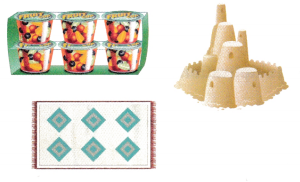
Answer:
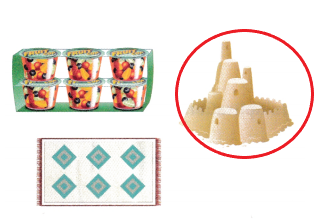
Explanation:
An array is an orderly arrangement (often in rows, columns or a matrix) that is most commonly used as a visual tool for demonstrating multiplication and division. The picture that is circled is not arranged in rows and columns. So, it does not represent an array.
Question 13.
Mathematical PRACTICE 1 Keep Trying Draw an array to find the unknown number in the multiplication sentence 6 × ![]() = 18.
= 18.
Answer:

Explanation:
The above drawn array has 6 rows and 3 columns
The multiplication sentence is 6 x 3
6 x 3 = 18
So, the unknown number in the given sentence is 3.
Write About It
Question 14.
How can I use an array to model multiplication?
Answer:
An array helps you to understand multiplication by visualising it. It makes sense of your times tables. For example, an array shows that, when multiplying two numbers together, the order of those numbers can be switched around. By way of an example, let’s take a look at two arrays: 2 x 4 and 4 x 2 .
2 x 4 = 8 and 4 x 2 = 8.
McGraw Hill My Math Grade 3 Chapter 4 Lesson 3 My Homework Answer Key
Practice
Draw an array to find the product.
Question 1.
5 × 7 = ____
Answer:
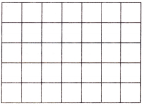
Explanation:
I drew an array to find the product of 5 x 7
7 + 7 + 7 + 7 + 7
5 x 7 = 35
Therefore, the product is 35.
Question 2.
6 × 5 = ____
Answer:
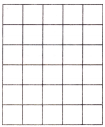
Explanation:
I drew an array to find the product of 6 x 5
5 + 5 + 5 + 5 + 5 + 5
6 x 5 = 30
Therefore, the product is 30.
Write an addition sentence and a multiplication sentence to show equal rows.
Question 3.

__________
__________
Answer:
2 + 2 + 2 + 2 = 8
4 x 2 = 8
Explanation:
The addition sentence that shows equal rows is 2 + 2 + 2 + 2 = 8
The multiplication sentence that shows equal rows is 4 x 2 = 8.
Question 4.
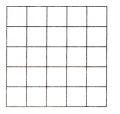
__________
__________
Answer:
5 + 5 + 5 + 5 + 5 = 25
5 x 5 = 25
Explanation:
The addition sentence that shows equal rows is 5 + 5 + 5 + 5 + 5 = 25
The multiplication sentence that shows equal rows is 5 x 5 = 25.
Vocabulary Check
Question 5.
Draw two arrays to model 2 × 3 = 6. Use the arrays to show the meaning of the Commutative Property of Multiplication.
Answer:

Explanation:
The above drawn arrays model of 2 x 3 = 6
The first array has 2 rows and 3 columns
2 x 3 = 6
The second array has 3 rows and 2 columns
3 x 2 = 6
The multiplication sentences 2 x 3 = 6 and 3 x 2 = 6 has same product and represent commutative property of multiplication
So, the arrays show the meaning of commutative property of multiplication.
Problem Solving
Question 6.
Mathematical PRACTICE 4 Model Math Suki’s watercolor set has 3 rows of paint. There are 8 colors in each row. Write a multiplication sentence to find the total number of colors in the set.
Answer:

Explanation:
Suki’s watercolor set has 3 rows of paint
There are 8 colors in each row
I drew an array with 3 rows and 8 columns
The multiplication sentence that solve the problem is 3 x 8 =
3 x 8 = 24
So, Suki’s watercolor has 24 colors in the set.
Question 7.
A checkerboard has 8 rows, with 8 squares in each row. Write a multiplication sentence to find the total number of squares.
Answer:
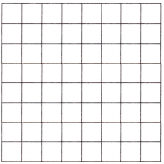
Explanation:
A checkerboard has 8 rows, with 8 squares in each row
I drew an array with 8 rows and 8 columns
The multiplication sentence that sole the problem is 8 x 8 =
8 x 8 = 64
So, the total number of squares in the checkerboard has 64 squares.